January Snow
January 17-18, 2018
After having an unusually heavy December snow, January 2018 started with a bitter cold spell with temperatures down to the low teens. Then on January 17 we woke up to temperatures of about 20F and an inch or two of snow that covered everything with white and did not melt on a day that never got up to the freezing point.
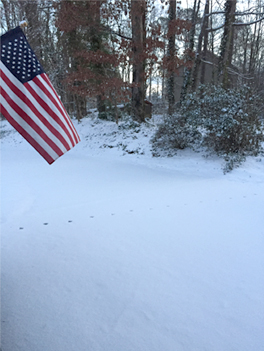 | 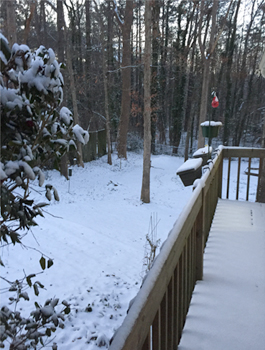 | 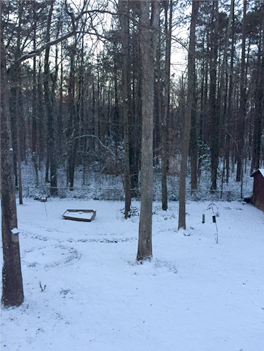 |
Note the line of evenly spaced tracks in the early snow above left. We guessed it was our usual cat visitor making those even tracks. At breakfast time it was interesting to see the backlighted snow formed so firmly on the deck in the cold temperatures. | 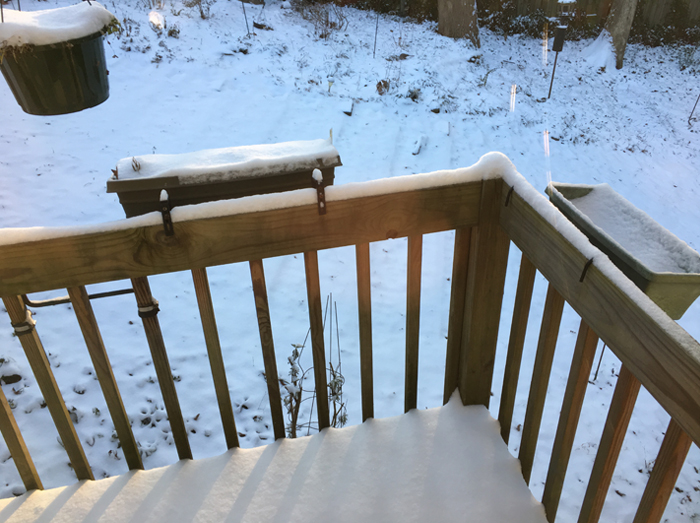 |
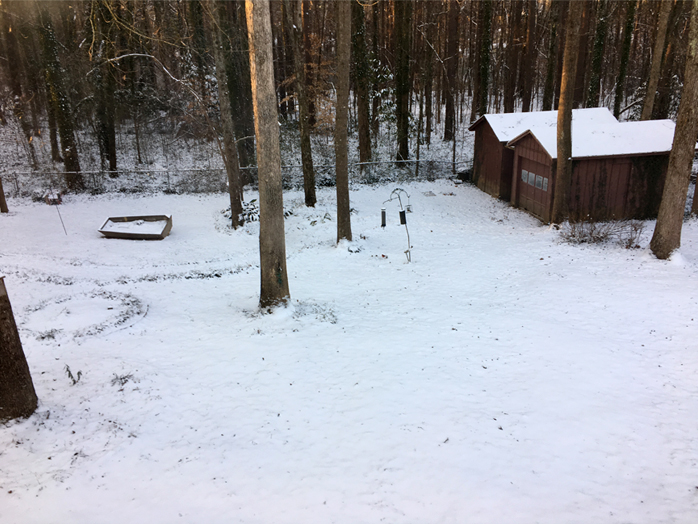 | In the early morning the light gave a fairly even white color to the back yard. |
At 3pm the view was much different with the stark shadows of the trees across the white snow. You can see the tracks of the squirrels who cross the snow in leaps because they apparently don't like being down in the snow. | 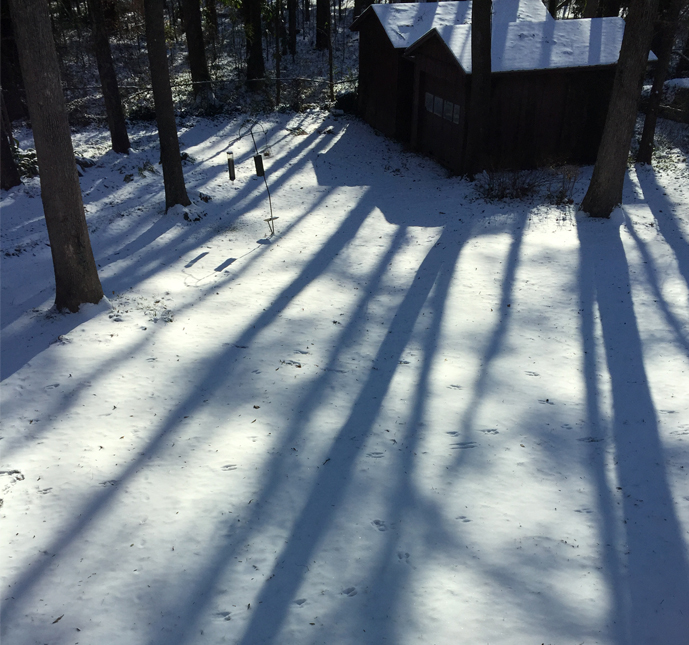 |
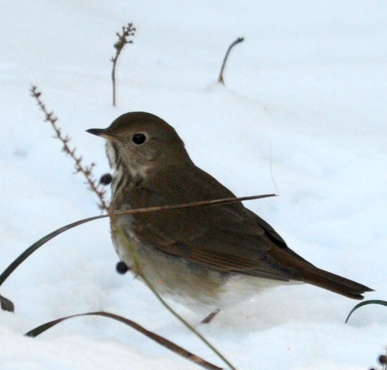 | 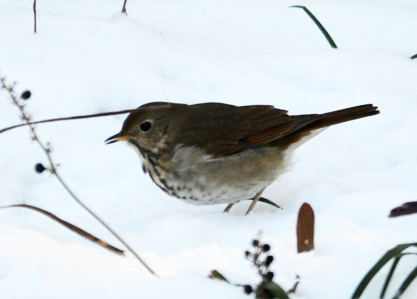 Snowtime gives us the opportunity to see some of the smaller migratory birds that we don't normally see. Robin gave us the clue that this bird is a Hermit Thrush. So not a migratory, but a secretive bird that you don't see very often. |
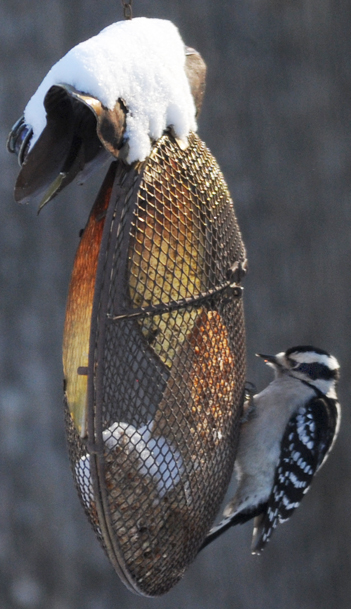 |  | My favorite part of the snow was watching the birds that came to feed. I had gotten out yesterday afternoon to fill the feeders, even though the indication at that time was just for snow flurries. One of our old friend species is the downy woodpecker. They like the suet and are regular visitors. At left the female downy came out early in the morning. Later in the day the red-spotted male visits. |
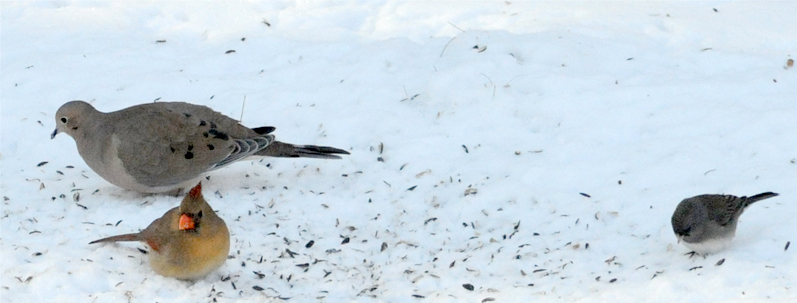
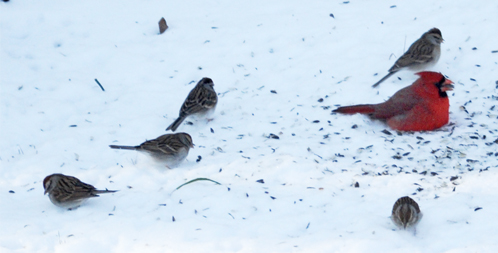 | The snow made it easier for the ground feeders under our back feeder. The dove, female cardinal and junco above seem to be appreciating it. With rare exception, this is the only time of year we see the juncoes. At left five sparrows join a male cardinal. |
 | 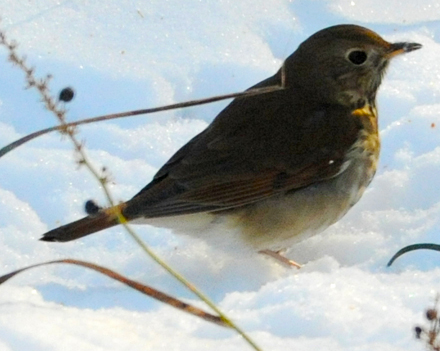 |
The top two on the left are juncoes, and they seemed to enjoy the snow and played around in it. Bottom left is Ruby Crowned Kinglet, again identification provided by Robin Ford. The one at right is likely a Hermit Thrush, although you can't see the characteristic spots on the breast.
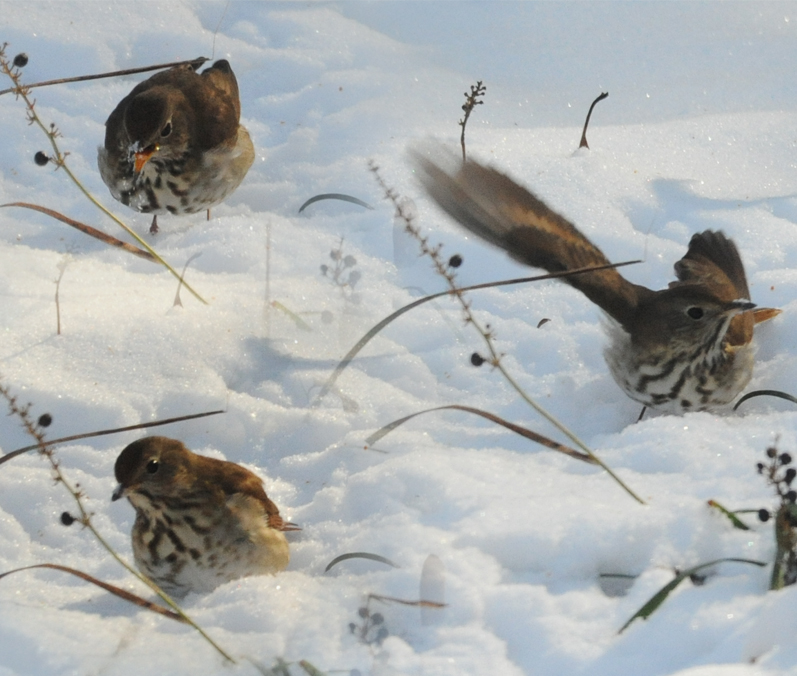
This was a really good opportunity to see the normally seclusive Hermit Thrush. The bird above it on the right may also be a Hermit Thrush, you just can't see the spots on it. It has the tiny feathers beneath the beak that are common with thrushes including the Robin.
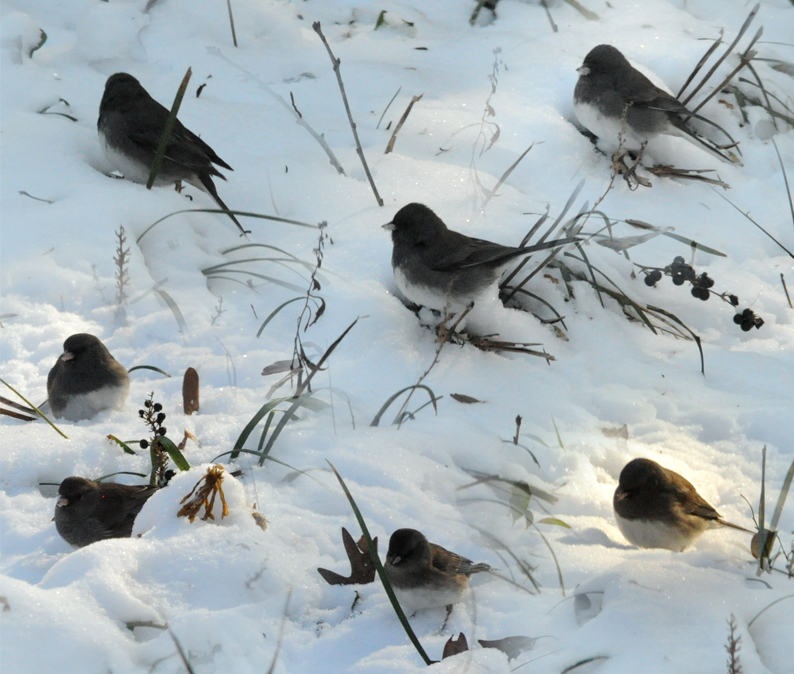
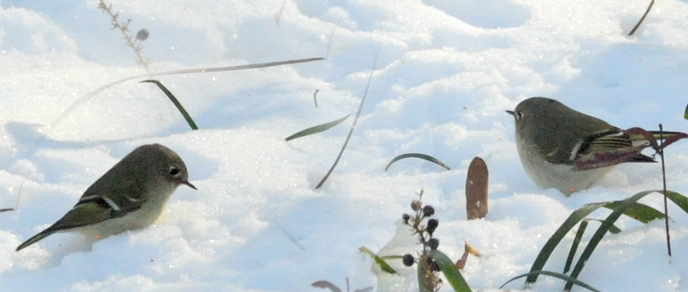 | Above is a composite of several juncoes in the snow. The species at left, the Ruby Crowned Kinglet, has the prominent band on its wing and extraordinarily thin and sharp beaks. None of the ones we saw showed the red crest. |
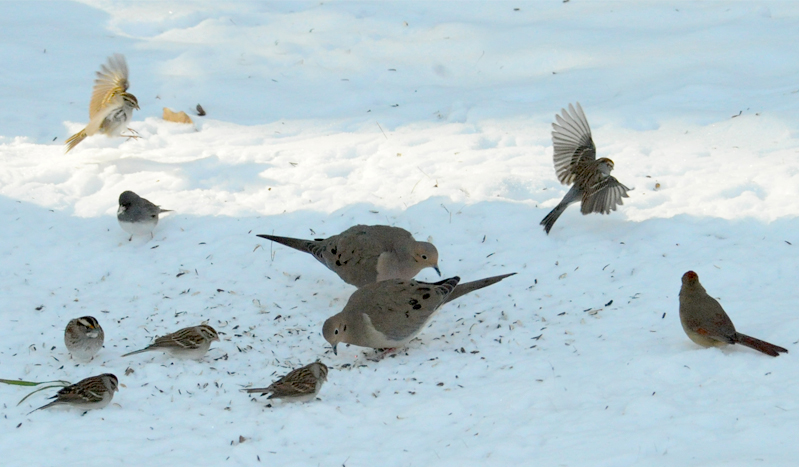
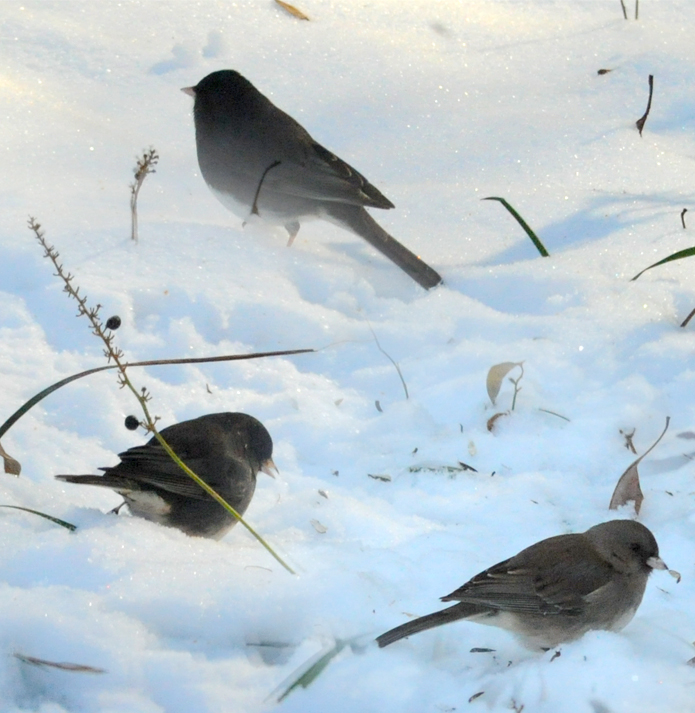 | At times, the area under the back feeder got very busy. Above are two doves, a junco and a half-dozen striped sparrows. At left, more juncoes. |
This junco is outnumbered five to one by hungry sparrows. | 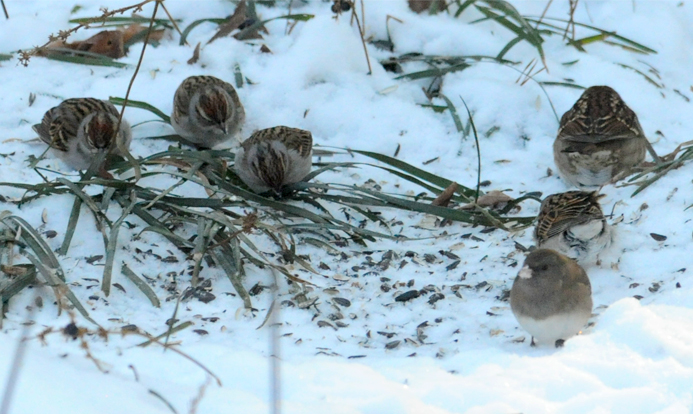 |
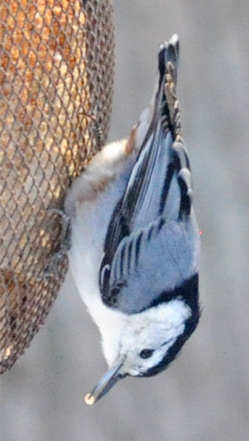 | 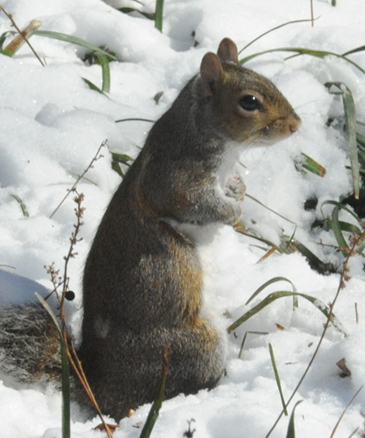 | Meanwhile, back at the upper feeders a nuthatch comes to get some suet. The nuthatches are one of our old friends and favorites. Then a squirrel gets into the action. You can tell from their actions that they do not like the snow, but this one could not pass up the opportunity. |
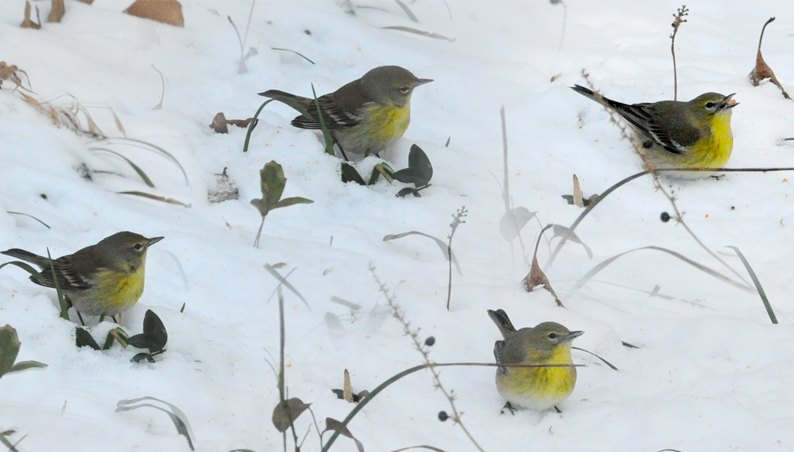
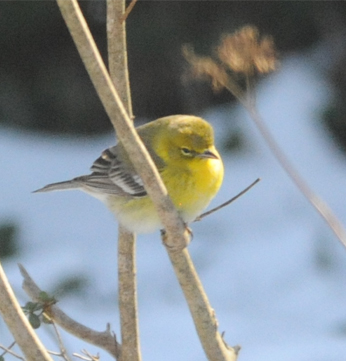 | The yellow breasted Pine Warbler has been present at the feeders for several weeks now, but was more evident today than usual. |
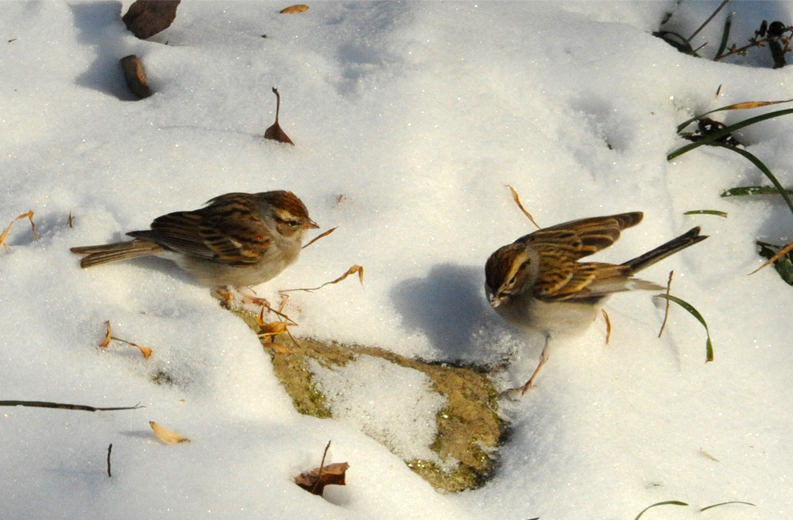
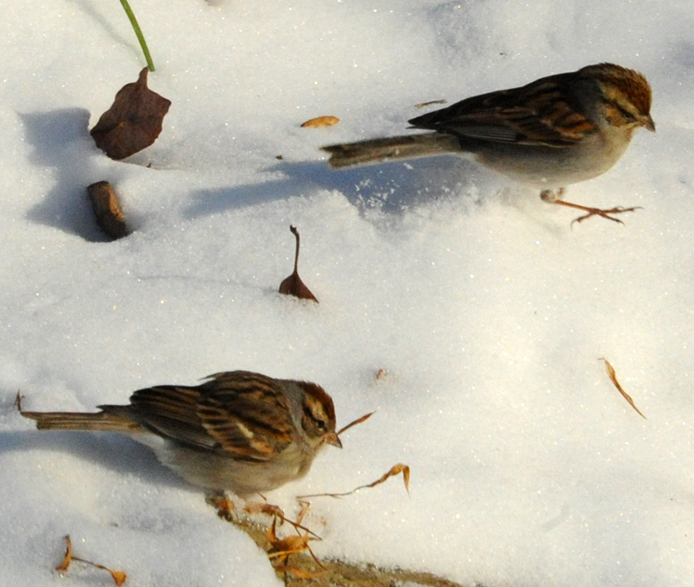 | These sparrows were very active in the afternoon, and seemed to be having a good time in the snow. At 1/1000 sec shutter speed, I caught the snow flying from the top bird's feed as he hopped. |
The sparrow at right looks like he is burrowing in the snow. I think I just caught him landing from a hop and he is sinking into the soft snow. 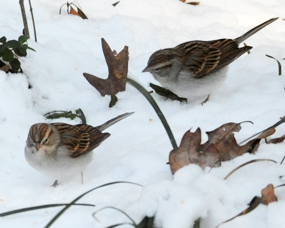 At other times I might have preferred to be out tromping in the snow, like the nice beautiful soft snow we had in December. But this time I was happy just watching the antics of the birds. | 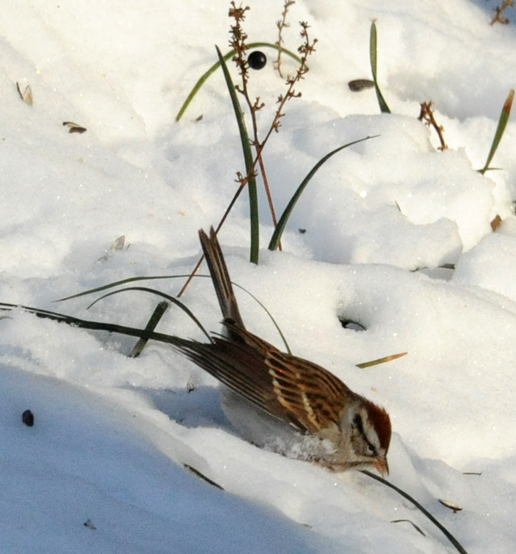 |
| Tech BSU Alumni Gathering |
2018